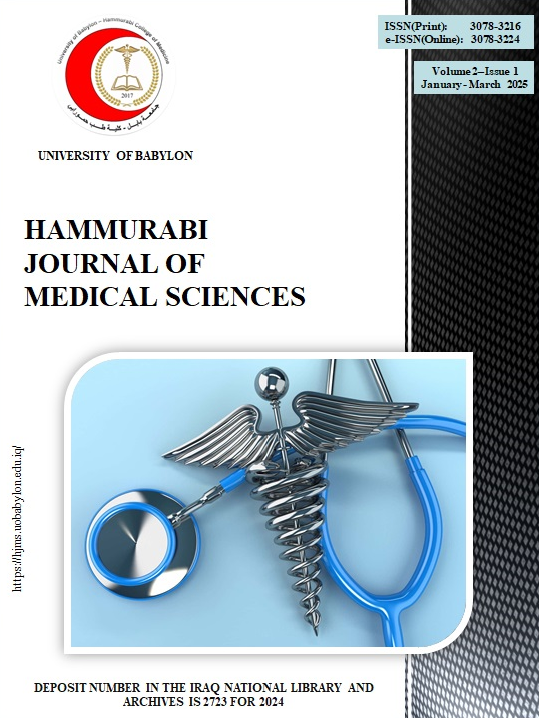Antibiotic Resistance and Biofilm Formation in Uropathogenic Bacteria: A Study of Clinical Isolates from Hilla City
Keywords:
antibiotic resistance, MDR, biofilm formation, Gram-negative, Gram-positive, UTIsAbstract
Background: Urinary tract infections (UTIs) are among the most common bacterial infections worldwide, often leading to significant morbidity if not promptly and properly treated. The growing incidence of antibiotic-resistant bacteria and their ability to form biofilms complicates the clinical management of these infections. Objectives: This study aimed to isolate and identify the bacterial pathogens causing UTIs, assess their antibiotic resistance profiles, and evaluate their biofilm formation capabilities. Materials and Methods: A total of 100 urine samples were collected from patients presenting with UTI symptoms at Al-Hashimiya General Hospital in the Babylon Governorate from November 15, 2023 to March 15, 2024. Bacterial isolates were obtained through standard microbiological techniques, including culture on selective media and subsequent identification via biochemical assays and the VITEK 2 system. Antibiotic susceptibility testing was performed using the Kirby-Bauer disk diffusion method, while the extent of biofilm formation was quantified using the microtiter plate assay. Results: Out of the 100 samples, 47% yielded pathogenic bacteria. Gram-negative bacteria comprised 79% of these isolates, whereas Gram-positive bacteria accounted for 21%. The predominant pathogens identified were Klebsiella pneumoniae, Escherichia coli, Proteus mirabilis, and Staphylococcus aureus. High rates of multidrug resistance were observed: 83% in E. coli, 84% in K. pneumoniae, 75% in P. mirabilis, and 70% in S. aureus. Furthermore, a considerable proportion of the isolates exhibited moderate to strong biofilm formation, which likely contributed to their resistance patterns. Conclusions: The study highlights the challenge posed by antibiotic-resistant, biofilm-forming UTI pathogens and underscores the need for robust antimicrobial stewardship and the exploration of alternative treatment strategies.


